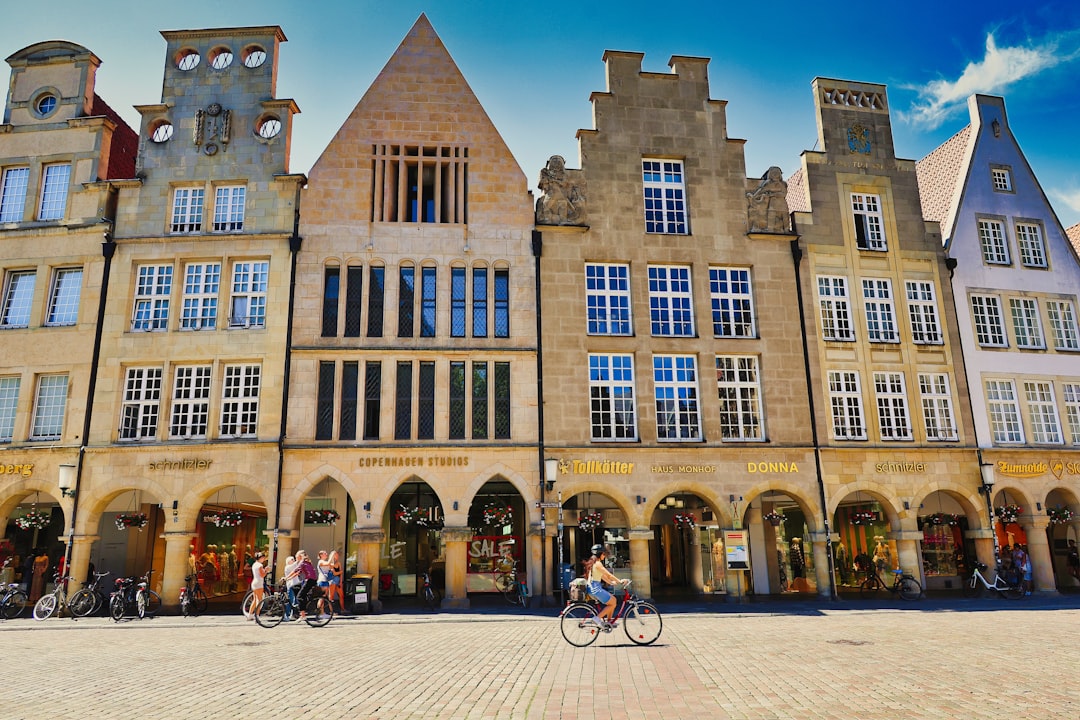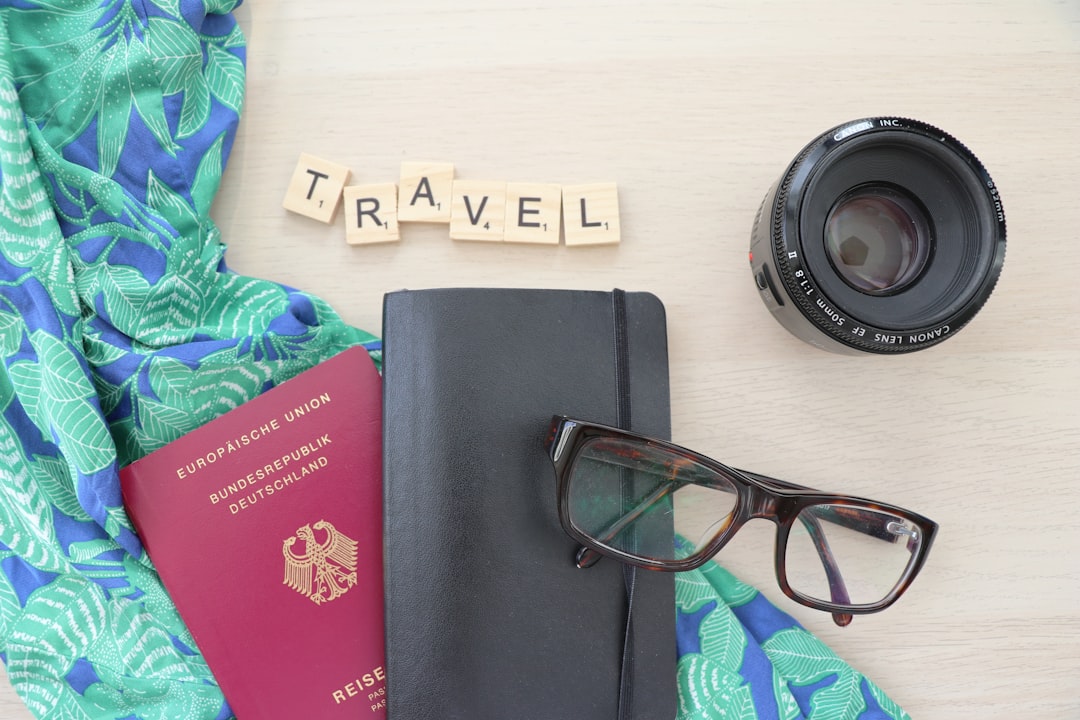Nomad Friendly Countries and the Gadgets That Keep You Connected

Introduction
The digital nomad lifestyle is built on two simple ideas: the freedom to work from anywhere and the ability to stay reliably connected while you do it. The first idea draws you to locations with vibrant culture, affordable living costs, and a supportive community of remote workers. The second idea depends on the right combination of local infrastructure and personal tech gear. In this article we explore the countries that consistently rank as the most nomad‑friendly and the gadgets that make it possible to stay online, powered, and productive wherever you set up camp.
What Makes a Country Nomad Friendly?
Before we list the destinations, it helps to understand the criteria that separate a good spot from a great one. Nomad‑friendly countries tend to excel in the following areas:
- Internet reliability – High average speeds, low latency, and widespread availability of broadband or 4G/5G networks.
- Cost of living – Affordable accommodation, food, and coworking spaces that let you stretch your earnings.
- Visa flexibility – Long‑term digital‑nomad visas, visa‑on‑arrival options, or easy extensions for stays of three months or more.
- Community – Active meet‑ups, coworking hubs, and online groups that make networking simple.
- Safety and healthcare – Low crime rates, political stability, and accessible medical services.
- Quality of life – Pleasant climate, cultural attractions, and a good balance between work and leisure.
When these factors line up, the country becomes a launchpad for remote work, and the gadgets you bring become the bridge that keeps you connected to clients, colleagues, and your own workflow.
Top Nomad‑Friendly Countries
Below is a curated list of countries that consistently score high across the criteria above. For each location we highlight the key connectivity features and a short note on the vibe that draws nomads there.
Portugal
Portugal’s Atlantic coast has become a magnet for remote workers. Lisbon and Porto offer a thriving coworking scene, while the Algarve provides a slower, beach‑side rhythm. Internet speeds average 100 Mbps in urban areas, and 4G coverage is extensive. The country’s “Digital Nomad Visa” allows stays of up to one year, with the possibility of renewal.
Mexico
From the colorful streets of Mexico City to the surf towns of Playa Playa and Tulum, Mexico blends culture with affordability. Broadband in the major cities exceeds 80 Mbps, and 4G LTE reaches most tourist hotspots. The country does not require a visa for stays under 180 days for many nationalities, and a temporary resident visa can be extended for up to four years.
Thailand
Bangkok, Chiang Mai, and the islands of Koh Samui and Phuket continue to attract nomads seeking low costs and a warm climate. Average fixed‑line speeds hover around 70 Mbps, while 4G LTE is strong in most regions. Thailand offers a “Smart Visa” that permits stays of up to one year for qualified remote workers.
Estonia
Estonia pioneered the digital‑nomad visa, allowing stays of up to a year for freelancers and remote employees. The capital, Tallinn, boasts a compact city center, a fast‑growing tech ecosystem, and average internet speeds above 120 Mbps. Even the smaller towns provide reliable Wi‑Fi thanks to nationwide fiber coverage.
Georgia
Tbilisi’s blend of old‑world charm and modern coworking spaces makes Georgia an emerging hub. The country’s “Remotely from Georgia” program welcomes remote workers for up to one year without a visa for many nationalities. Broadband speeds are modest at 30‑50 Mbps, but 4G LTE is widely available and stable.
Croatia
With its Adriatic coastline and historic cities such as Dubrovnik and Split, Croatia offers a scenic backdrop for remote work. The government introduced a digital‑nomad visa that grants up to a year of residence. Internet speeds in urban centers exceed 80 Mbps, and 4G coverage is solid along the coast.
Vietnam
Hanoi, Ho Chi Minh City, and Da Nang combine bustling street life with affordable living. Fixed‑line broadband can reach 100 Mbps in the major cities, and 4G LTE is reliable across most of the country. While there is no specific nomad visa, many travelers stay on tourist visas and extend them locally.
Costa Rica
Known for its “Pura Vida” lifestyle, Costa Rica attracts those who want nature without sacrificing connectivity. Internet speeds in San José and other urban areas range from 70‑100 Mbps, and 4G LTE covers most of the populated regions. The country offers a “Rentista” visa that can be used for remote work.
Spain
Barcelona, Madrid, and the islands of Tenerife and Gran Canaria provide a mix of culture, sunshine, and modern infrastructure. Average broadband speeds exceed 100 Mbps, and 4G LTE is pervasive. Spain’s “Non‑Lucrative Residence Visa” can be used for remote work, and the country’s EU status simplifies travel across Europe.
Malaysia
Kuala Lumpur and Penang are tech‑savvy cities with robust internet and a low cost of living. Broadband speeds in the capital can reach 150 Mbps, and 4G LTE is widespread. Malaysia’s “Long‑Term Social Visit Pass” can be extended for up to ten years, making it a practical base for digital nomads.
Core Connectivity Gadgets
Having a reliable internet connection is non‑negotiable for remote work. While local infrastructure varies, a handful of portable gadgets can bridge gaps, boost speed, and protect your data.
Portable Wi‑Fi Router
A pocket‑size router that accepts a local SIM card transforms a mobile data plan into a secure, shared network. Look for models that support both 4G LTE and emerging 5G bands, have dual‑band Wi‑Fi (2.4 GHz and 5 GHz), and a battery that lasts at least 10 hours. Popular choices include the GL.iNet GL‑MIFI and the TP‑Link M7350.
Global SIM Card
If you travel frequently between countries, a global SIM eliminates the need to swap cards at every border. Providers such as OneSimCard, GigSky, and Airalo offer data packages that work across multiple regions, often with a per‑GB pricing model. Pair the SIM with a portable router for a seamless hotspot experience.
USB‑C Ethernet Adapter
Even in the best coffee shops, Wi‑Fi can be spotty. An Ethernet adapter lets you plug into wired connections when available, providing stable speeds and lower latency. Choose a model with a built‑in power delivery (PD) pass‑through, so you can charge your laptop while connected.
Power Bank with PD
Remote work often means long hours in cafés or coworking spaces where power outlets are limited. A high‑capacity power bank (20,000 mAh or more) with USB‑C PD output can keep a laptop alive for 8‑10 hours. Look for models that support fast charging standards like Power Delivery 3.0.
Travel Router with VPN Support
Security is paramount when you’re on public Wi‑Fi. A travel router that can run a personal VPN client encrypts all traffic before it reaches the internet. The GL.iNet GL‑AR750S‑Slate and Raspberry Pi Zero W configured with OpenVPN are affordable options.
Compact External SSD
Working with large media files, design assets, or code repositories requires fast local storage. A rugged, USB‑C external SSD (500 GB to 2 TB) offers read/write speeds above 1000 MB/s and can survive the bumps of a nomadic lifestyle. The Samsung T7 and SanDisk Extreme Portable SSD are widely praised.
Noise‑Cancelling Headphones
Video calls, podcasts, and focused work sessions demand a quiet audio environment. Active‑noise‑cancelling (ANC) headphones block out café chatter and airplane noise. Look for models with a reliable Bluetooth connection, a long battery life (30 hours or more), and a comfortable fit for all‑day wear. The Sony WH‑1000XM4 and Bose QuietComfort 45 are industry standards.
Universal Travel Adapter with Surge Protection
Electrical outlets differ worldwide, and a single adapter that covers the most common plug types (Type A, C, G, I) reduces bulk. Adding surge protection safeguards your electronics from voltage spikes, especially in regions with unstable grids. Brands like Anker and Ceptics provide robust options.
Power Management Essentials
Staying powered is as critical as staying connected. In many nomad destinations, power outages can occur, especially during hot seasons or in rural areas. The following gear ensures you stay online even when the grid goes down.
Solar Power Bank
A solar panel integrated into a power bank provides an emergency charging source when outlets are unavailable. Choose a model with at least 2 W of solar input and a capacity of 20,000 mAh. While solar charging is slower than wall charging, it can keep your devices alive during extended outdoor work sessions.
Portable Inverter
If you need to run a laptop or a small monitor from a car battery, a portable inverter converts DC to AC power. Look for a pure‑sine wave inverter rated for at least 300 W, which can handle most ultrabooks and 1080p monitors without overheating.
Backup Battery for Router
Some portable routers support an external battery pack that can keep the hotspot alive for up to 24 hours. Pair this with a solar charger for an off‑grid solution that works in remote cabins or beachfront bungalows.
Security Tools for the Road
Working from anywhere also means exposing your data to varied network risks. Beyond a VPN‑enabled travel router, consider these additional security measures.
Hardware VPN Key
A USB‑C or USB‑A hardware security token (such as a YubiKey) stores encryption keys and can be used for two‑factor authentication on services like Google, GitHub, and Dropbox. Even if your password is compromised, the physical key blocks unauthorized access.
Encrypted USB Drive
Storing sensitive client files on an encrypted USB stick adds a layer of protection if your laptop is lost or stolen. Devices that meet FIPS 140‑2 standards, like the Kingston DataTraveler Vault, provide strong AES‑256 encryption.
Secure Cloud Storage with Zero‑Knowledge Encryption
Choose a cloud provider that does not retain the decryption keys. Services such as Sync.com, Tresorit, and Proton Drive ensure only you can access the data, even if the provider is hacked.
Productivity Gadgets
Connectivity and power are the foundation, but productivity hinges on tools that streamline work and reduce friction.
Compact Bluetooth Keyboard
A lightweight, low‑profile Bluetooth keyboard turns any tablet or small laptop into a full‑size typing station. The Logitech K380 and Keychron K3 offer multi‑device pairing and long battery life.
Portable Monitor
A 12‑inch to 15‑inch USB‑C powered monitor expands screen real estate without adding significant weight. The ASUS ZenScreen and Lenovo ThinkVision M14 are popular among nomads who need dual‑screen setups for coding or design.
Adjustable Laptop Stand
Ergonomics matter, especially when you work from cafés for hours. An aluminum, foldable laptop stand raises the screen to eye level, reducing neck strain. Look for models with multiple height settings and a non‑slip surface.
Digital Notebook
For those who like to sketch ideas or annotate PDFs by hand, a digital notebook like the reMarkable 2 or Wacom One offers a paper‑like feel with cloud sync. They are handy for brainstorming sessions on the go.
Country‑Specific Gadget Recommendations
While the core gear above covers most scenarios, each country presents unique challenges that can be mitigated with a few extra devices.
Portugal
- Wi‑Fi Extender – In historic neighborhoods where walls are thick, a compact Wi‑Fi extender helps maintain a strong signal in coworking spaces.
- Portuguese Power Adapter – Type F plugs are common; a universal adapter with Type F compatibility avoids the need for separate chargers.
Mexico
- Dual‑Band Router with 5G Compatibility – Mexico’s 5G rollout is expanding in major cities. A router that can switch to 5G when available boosts speed dramatically.
- Rain‑Resistant Power Bank – Coastal towns like Tulum experience sudden rain showers; a water‑resistant power bank protects against moisture.
Thailand
- SIM Card with Unlimited Data – Local carriers such as AIS and TrueMove offer affordable unlimited data plans that work well with portable routers.
- Heat‑Resistant Case for Laptop – High temperatures can affect battery performance; a case with ventilation helps keep the device cool.
Estonia
- e‑Residency Card Reader – Estonia’s e‑Residency program allows remote entrepreneurs to manage a digital business. A USB card reader simplifies signing documents.
- Nordic‑Standard Power Strip – Type C and Type F plugs are used; a power strip with both ensures you can charge multiple devices simultaneously.
Georgia
- Satellite Messenger – In mountainous regions, cellular coverage can be spotty. A satellite messenger like the Garmin inReach provides a safety net for emergencies.
- Portable Wi‑Fi Booster – Boosts weak 4G signals in rural guesthouses.
Croatia
- Waterproof Backpack – Coastal humidity can affect electronics; a waterproof daypack protects gadgets during boat trips.
- Travel Router with EU‑Compliant Firmware – Ensures compatibility with local internet service providers.
Vietnam
- Voltage Converter – Vietnam’s mains voltage is 220 V, but some older hotels have unstable output. A voltage converter protects sensitive equipment.
- Local Language Keyboard Stickers – For those using a laptop with a US layout, stickers help navigate Vietnamese keyboard prompts.
Costa Rica
- Solar Charger with High Output – Frequent power outages in rural eco‑lodges can be mitigated with a solar charger capable of 15 W or more.
- Mosquito‑Proof Laptop Sleeve – In tropical environments, a sleeve with mesh can deter insects.
Spain
- Smart Plug with EU Plug – Allows remote control of home devices via smartphone, useful for managing a secondary residence.
- Portable Espresso Maker – While not a tech gadget, a compact coffee maker keeps productivity high during long work sessions.
Malaysia
- USB‑C Hub with HDMI – Enables connection to external monitors in coworking spaces that only provide HDMI outputs.
- Rain‑Proof Keyboard Cover – Sudden tropical downpours can splash onto desks; a silicone cover protects the keyboard.
Staying Connected on the Move
Even with the best gear, staying online while traveling between cities or countries requires a strategic approach.
Map Out Wi‑Fi Hotspots
Before you arrive, use apps like Wi‑Fi Map or Instabridge to locate free or paid hotspots in your destination. Many cafes post their passwords on the window, but having a backup list prevents downtime.
Test Local SIMs Early
Buy a local SIM as soon as you land and test it with your portable router. If the signal is weak, try a different carrier or a prepaid data plan that offers higher bandwidth.
Use a Split‑Tunneling VPN
A VPN that supports split tunneling lets you route only sensitive traffic (e.g., banking, client portals) through the encrypted tunnel while keeping local services (e.g., streaming, maps) on the regular connection. This reduces latency for work‑related apps.
Schedule Offline Work
Plan blocks of time for tasks that do not require internet, such as writing drafts, brainstorming, or data analysis. This buffer protects you from unexpected outages.
Keep Backup Connectivity
Carry a second portable router or a dedicated hotspot device. Some travelers keep a cheap MiFi unit that can be activated on another carrier if the primary router fails.
Budgeting for Tech on the Road
Investing in high‑quality gear can be costly, but careful budgeting ensures you get the most value without overspending.
- Prioritize essentials – A reliable router, power bank, and noise‑cancelling headphones should be at the top of your list.
- Buy versatile devices – Choose gear that serves multiple purposes, such as a USB‑C hub that also provides PD charging.
- Consider rentals – In some destinations, especially long‑term stays, renting a high‑end laptop or portable monitor can be cheaper than buying.
- Leverage travel insurance – Some policies cover loss or damage to electronics, reducing the risk of expensive replacements.
- Look for local deals – In countries like Thailand and Mexico, you can find high‑quality accessories at a fraction of the price compared to Western markets.
Managing Data Across Borders
Data sovereignty laws vary, and working with client information can be tricky when you cross international borders.
- Store data locally – Keep a copy of essential files on an encrypted external SSD that you travel with.
- Sync selectively – Use cloud services with selective sync to avoid uploading large files that may be restricted in certain regions.
- Understand local regulations – For example, the EU’s GDPR imposes strict rules on personal data. If you’re processing EU citizen data while in another country, you must still comply with GDPR standards.
- Use regional VPN servers – When accessing region‑locked services, choose a server located in the same jurisdiction as the data to stay compliant.
Lifestyle Hacks for Seamless Connectivity
Beyond gadgets, small habits can dramatically improve your remote‑working experience.
- Set a consistent workspace routine – Even if you change locations, having a dedicated desk setup (laptop, monitor, keyboard) helps your brain switch into work mode quickly.
- Maintain a backup power schedule – Charge all devices every night, and keep a nightly checklist of battery levels.
- Use digital calendars with time‑zone support – Tools like Google Calendar automatically adjust meeting times when you cross time zones, preventing missed calls.
- Stay hydrated and take movement breaks – Long periods in front of screens can cause fatigue, which in turn reduces productivity.
- Network locally – Attend meet‑ups or coworking events. Building relationships with local freelancers often leads to tips on the best internet cafés or hidden power‑friendly spots.
Future Trends That Will Impact Nomads
The tech landscape continues to evolve, and upcoming developments will shape how digital nomads stay connected.
- 5G Expansion – As 5G networks roll out globally, portable routers that support millimeter‑wave bands will deliver gigabit speeds in urban hubs.
- Satellite Internet Services – Companies like Starlink and OneWeb are launching low‑latency satellite broadband, making remote locations truly connected. A small satellite dish can provide a reliable backup when terrestrial networks fail.
- Edge Computing Devices – Portable AI accelerators (e.g., NVIDIA Jetson Nano) will enable on‑device processing of heavy workloads, reducing dependence on cloud services.
- Improved Battery Chemistry – Solid‑state batteries promise higher energy density, meaning lighter power banks that last longer.
- Cross‑Border Data Solutions – New compliance tools will help nomads automatically enforce data residency rules, simplifying international work.
Final Thoughts
Choosing a nomad‑friendly country is only half of the equation. The other half lies in equipping yourself with the right gadgets that guarantee a stable internet connection, uninterrupted power, robust security, and high productivity wherever you set foot. By combining a well‑researched destination with a thoughtfully curated tech kit, you can transform any café, beach bungalow, or mountain lodge into a fully functional office.
Remember that the most successful digital nomads are not just those who chase the cheapest airfare or the fastest Wi‑Fi. They are the ones who anticipate challenges, invest in reliable gear, adapt to local infrastructure, and maintain disciplined work habits. Use the country insights and gadget recommendations in this guide as a launchpad, customize the list to fit your personal workflow, and you’ll find that the world truly becomes your office. Safe travels and happy connecting!
Random Posts

Top Strategies For Managing Projects Across Multiple Time Zones
Learn how to turn global time zone differences into a strength with proven planning, clear communication habits, smart tools, and a culture that respects each team's rhythm and goals
1 month ago

Where to Set Up Shop Abroad and What Gear to Pack
Discover the top nomad hotspots from Bali to Lisbon, learn what infrastructure matters, and get a practical packing list so you can work anywhere without missing a beat.
1 month ago

Proven Methods To Keep Remote Teams Aligned And Productive
Discover research-backed tactics to align remote teams, boost communication, and sustain productivity across time zones with simple habits, clear rituals and smart tools you can implement today.
3 weeks ago

The Complete Resource List for Modern Nomads
Discover the ultimate toolkit for digital nomads, with apps, books, podcasts and courses organized by the challenges you face, so you can travel, work and grow with confidence and ease.
1 week ago

Mastering Light Travel Without Sacrificing Comfort
Learn how to travel light while keeping the comforts that boost productivity, health and happiness. Discover minimalist mindsets, multipurpose gear and sustainable packing tricks that fit in any overhead bin without compromise.
2 months ago
Latest Posts

Essential Software Every Remote Professional Should Use
Master remote work with essential tools: instant messaging like Slack, high definition video calls such as Zoom, and asynchronous voice apps. Streamline communication, stay connected and boost productivity.
1 day ago

Mastering Remote Work Productivity for Digital Nomads and Freelancers
Learn proven habits, tools, and tactics that help digital nomads and freelancers stay focused, deliver quality work, and maintain a sustainable lifestyle while traveling the world.
1 day ago

Tech‑Friendly European Towns Perfect for Remote Living
Discover Europe’s best small towns where fast internet, affordable living and vibrant tech communities let you work remotely while soaking up historic charm, lakeside views or mountain air.
1 day ago